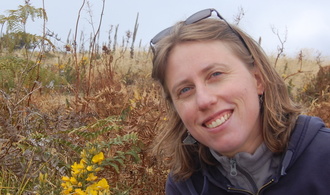Invasive species do not recognize borders - Interview with Sonia Vanderhoeven
Written by Modified on the
Like Reunion, Belgium faces a growing number of invasive species with harmful effects on the environment. Also, to help land managers and Belgian politicians in the identification of these species,an information system known as Harmonica has been devised. This decision-making tool was developed by scientists from the Belgian Forum on Invasive Species (http://ias.biodiversity.be) and managed by Sonia Vanderhoeven, researcher for the Belgian Biodiversity platform (www.biodiversity.be).
What do you call an "invasive alien species"?
- Invasive (or alien) species are species that have been transported deliberately or accidentally by humans outside their natural range, into a new territory. They then proliferate in this new territory at the expense of native flora and fauna. Invasive alien species pose a number of environmental problems, but may also present phytosanitary, animal health and public health issues.
How does the Harmonia system work?
- Harmonia is an information system on invasive species aimed at land managers and policy makers, in particular to help prioritize their actions and propose measures to prevent or mitigate damage. To do this, Harmonia is based on a standardized assessment protocol (ISEIA) designed to be adaptable to any type of organization and make the evaluation and classification of invasive species transparent and reproducible (http://ias.biodiversity.be/ documents/ISEIA_protocol.pdf). Based on an analysis of the scientific literature conducted by a panel of experts, this protocol allows an organization to list and classify invasive alien species according to two criteria : their environmental impact (low, medium, high) and their distribution (absent, isolated, restricted, widespread).
How can you set up a truly integrated invasive species management system in the field, taking into account the expectations of different stakeholders?
- We must work on prioritization. Risk assessmentis used to define lists of species according to territorial distribution and potential impact. On the basis of these different lists of species, it is possible to fix tangible management targets. This will allow policy makers, for example, to opt for prevention, eradication or containment for species which are already widely present and populations have invaded environments of biological importance. In a way, our approach is to digest scientific information and return content that facilitates decision-making. It is also important that the assessment is done independently of the different actors involved in the issue. It is only during the second phase, the implementation of management measures, that consultation with stakeholders is paramount.
Do consultations between different actors extend to several countries?
- The ISIEA protocol considers an alien species as likely to cause impacts on native species and ecosystems in Belgium if it has previously been a problem in neighbouring countries with similar environmental conditions. The problem of invasive species can only be addressed locally. These species do not recognize borders and therefore do not stop there. We thus find the same invasive species in the same habitat in different countries. Working across a bio-region, in our case the territories of Belgium, Luxembourg, the Netherlands, Germany and France, allows us to pool resources and exchange good practices. Such collaboration exists, I believe, between the islands of the south-west Indian Ocean. We are always stronger when we work together !


